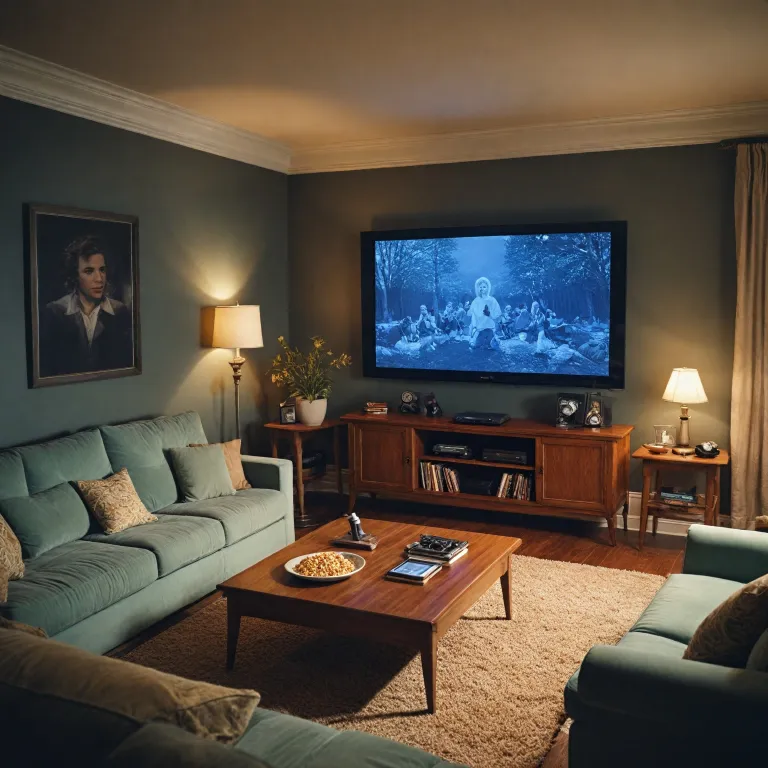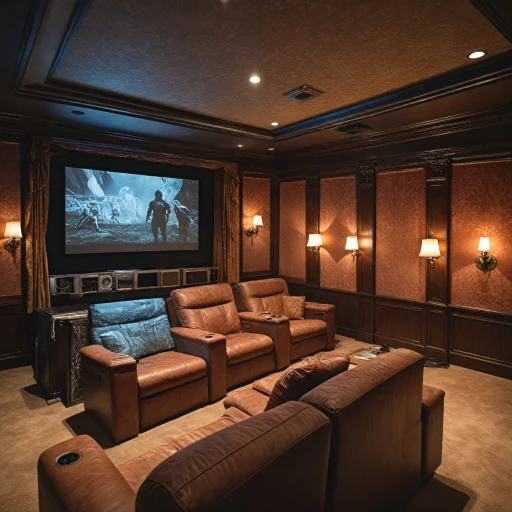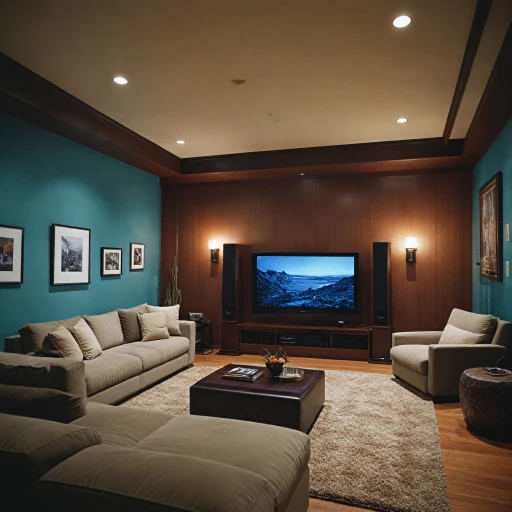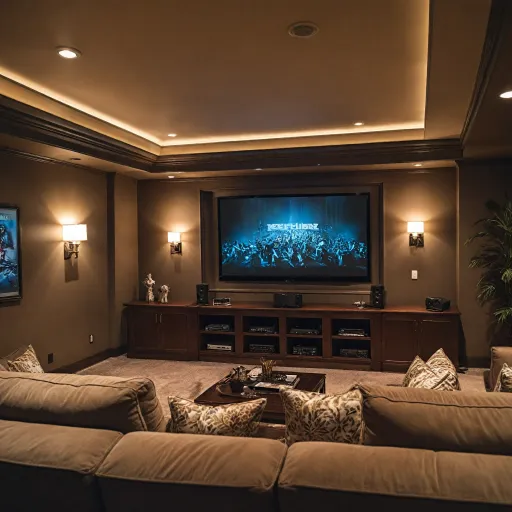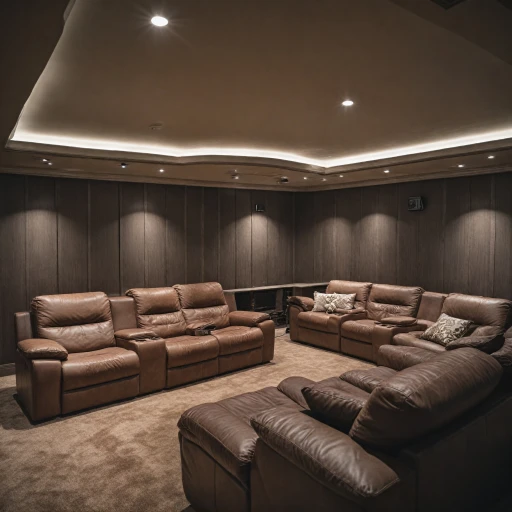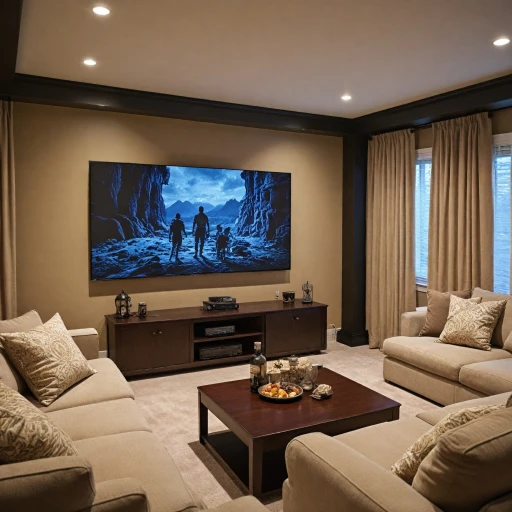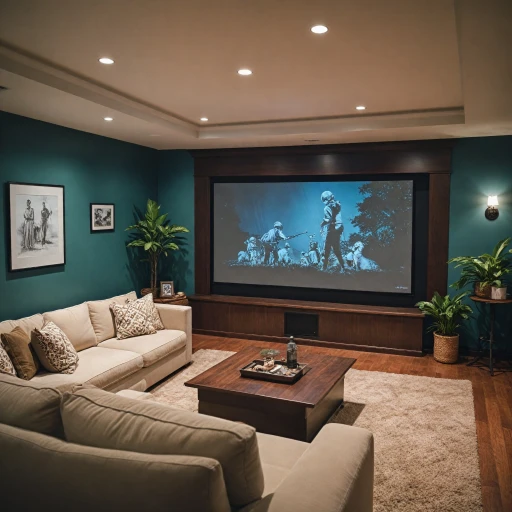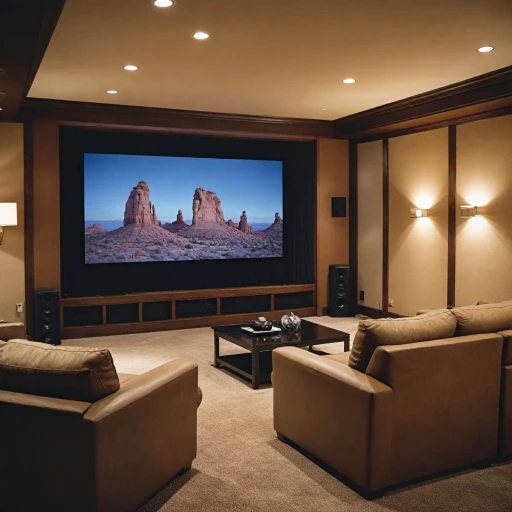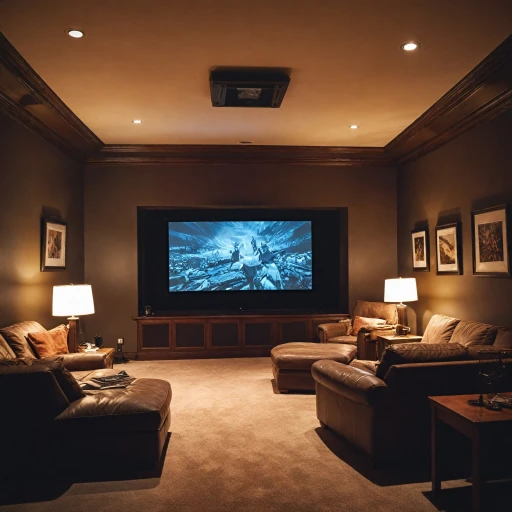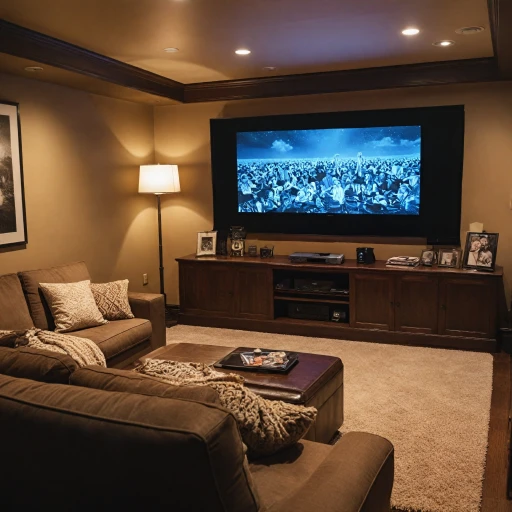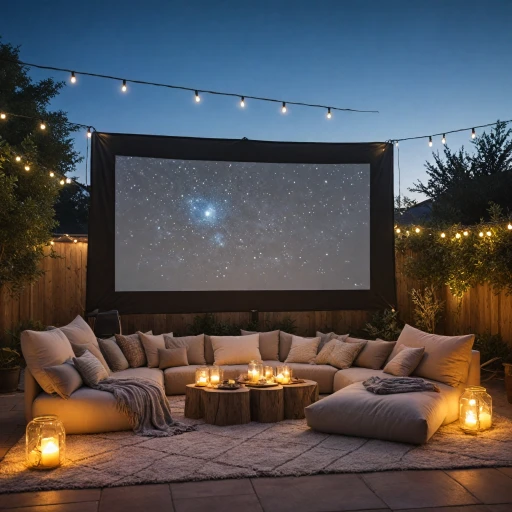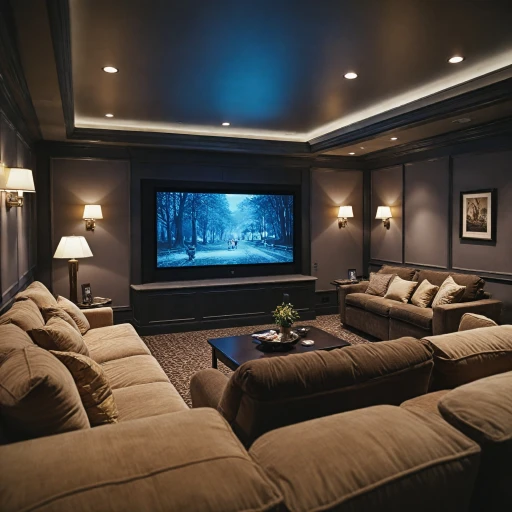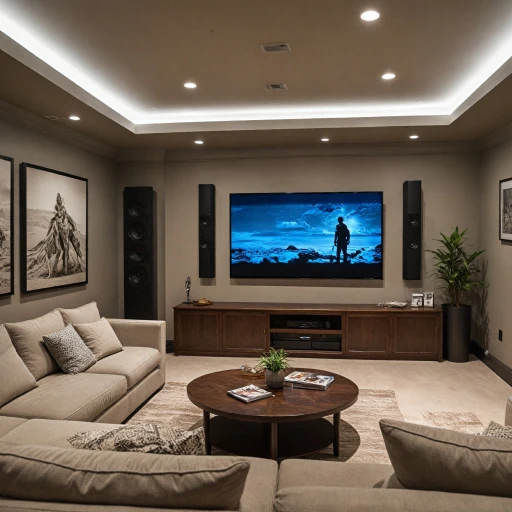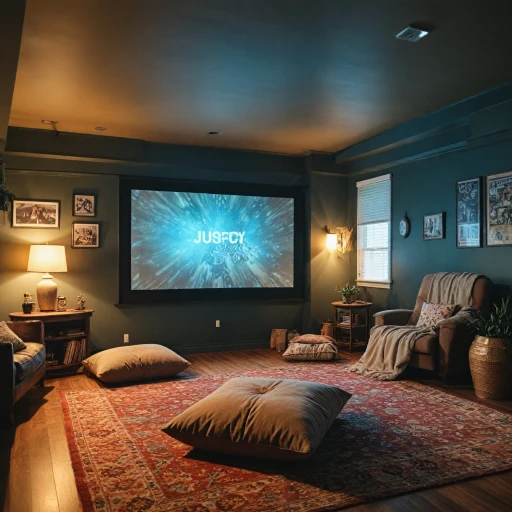
Understanding the Role of a 3.5 mm Aux Cord in Home Theaters
Understanding the Importance of the 3.5 mm Aux Cord
In the world of home theaters, achieving the perfect sound can be just as important as a high-definition visual experience. The 3.5 mm aux cord, despite being a seemingly simple component, plays a critical role in connecting various audio devices and enhancing sound quality. Whether you are setting up a new home theater system or upgrading an existing one, understanding the function of this cable is crucial.
The 3.5 mm standard is notably versatile, often used in a variety of devices, including headphones, car stereos, and speakers. This universal connector ensures compatibility with most audio-producing equipment, providing a reliable stereo sound output. It is essential for transmitting audio from a source, such as a television or a mobile device, to the speakers in your home theater system.
A high-quality aux cord enables better sound clarity, with reduced noise and interference, making your entertainment experience much more enjoyable. Various designs, such as those with braided nylon coverings, offer durability, while the length and price can vary widely, allowing for flexibility in accommodating your setup needs. Other options, like the lightning cable or USB cable, can be explored for specific compatibility requirements.
Reviews often cite the simplicity and effectiveness of aux cables, noting their ease of use and reliable audio transmission. As you consider your home theater setup, keep in mind that this auxiliary cable is an integral component that can either enhance or hinder your overall sound experience. Therefore, dedicating time to choose the right cable, as discussed later, will significantly contribute to achieving the ultimate audio quality in your home theater.
Choosing the Right Aux Cord for Your Setup
Finding the Perfect Aux Cord for Your Needs
When it comes to enhancing your home theater experience, selecting the right aux cord is crucial. The quality of the audio output can be significantly influenced by the audio cable you choose. Here are some key factors and tips to consider when you're making your choice:- Cable Length: Depending on the layout of your home theater system, a cable of sufficient length ensures flexibility and convenience. Lengths can range from a few inches to several meters, so determine the adequate length based on your setup.
- Connector Type: Most common aux cables feature a male stereo connector, compatible with various devices like headphones, speakers, and car stereos. Ensure the cable's connectors are compatible with your devices’ ports.
- Material and Durability: Opt for cables made of high-quality materials. Braided nylon options, for instance, often provide greater durability against wear and tear compared to regular plastic-coated cables.
- Audio Quality: For the best stereo audio, select cables that have positive reviews for sound quality and clarity. Consider audio cables labeled as "high" quality or "stereo aux" for optimal results.
- Price Range: Aux cables are available across a wide price range. While premium cables can offer better durability and sound, there are reasonably priced options that also deliver commendable performance.
- Additional Features: Some aux cords come with additional features like noise cancellation or are bundled with USB cables for better connectivity with modern devices.
Setting Up Your Home Theater with an Aux Cord
Streamlining the Setup Process for Seamless Audio Integration
Setting up your home theater with a 3.5 mm aux cord requires a combination of accuracy and some simple techniques to ensure the best sound quality possible. Here's how you can smoothly incorporate this versatile cable into your audio setup:
- Gather Your Equipment: Before diving into the setup, gather all necessary components such as the 3.5 mm male stereo aux cord, your home theater devices, and other audio output equipment, like speakers or headphones.
- Identify the Audio Output: Locate the audio output port on your home theater receiver, stereo system, or the audio device you plan to connect. Most often, this will be a recognizable 3.5 mm port or an alternative audio output option compatible with your aux cord.
- Establish Connections: Connect the male end of your audio aux cable securely into the corresponding female connector on your audio source and the auxiliary input of your chosen device. Ensure all connections are tight to prevent any interruptions in your audio playback.
- Test Your Setup: Start by playing a stereo audio track to check sound quality and confirm connections. Adjust the volume settings on your devices to achieve optimal audio output.
- Address Length and Quality Concerns: While longer cables can be convenient, they may occasionally lead to signal degradation. Consider the appropriate length for your setup and explore high-quality braided nylon or stereo cables with favorable reviews to ensure durability and maintain a pristine audio experience.
Incorporating a 3.5 mm aux cord into your home theater setup is ultimately about achieving audio compatibility across varied devices. As you refine your audio system, stay open to experimenting with different auxiliary cable types. For those interested in exploring additional audio integration, the right projector screen mount can further enhance your viewing experience.
Troubleshooting Common Aux Cord Issues
Troubleshooting common issues with your 3.5 mm aux cord can be essential for a seamless home theater experience. Even when you've chosen the right audio cable for your setup, problems can arise due to various reasons. Here’s a guide to help you navigate some of the usual hiccups you might encounter when using these connectors.Addressing Connectivity Problems
When your aux cord isn't delivering sound to your devices, it might be due to a loose connection or a malfunctioning cable. Ensure the male stereo connector is securely plugged into the audio output and input ports. Wiggle the connector gently to see if the sound returns, as a slight movement can sometimes mend a temporary connection issue. If problems persist, testing the aux cable with another device can help determine if the cable is at fault.Checking for Physical Damage
Visible damage to the cable or connectors can often be the culprit behind sound issues. Inspect the entire cable length closely—noting any frayed edges or bent connectors. Cables with braided nylon sheathing might offer greater durability, but all types will eventually wear out. Regular maintenance and careful handling can prolong the life of your connection cables.Solving Audio Distortions
Experiencing static or stereo audio distortion? This could be caused by interference or a defective cable. Ensure your cable is compatible with your devices and not too lengthy, as longer cables can sometimes degrade the signal quality. Consider investing in a high-quality auxiliary cable, even if it comes at a higher price, to ensure clear sound. If distortion persists, reviewing the audio settings on your home theater system might uncover wrong configurations.Handling Compatibility Issues
Compatibility between your aux cord and devices is crucial for optimal sound transmission. Consider using a stereo aux cable that matches the specifications of your car stereos or other audio output devices. If your device uses a different input, such as a lightning cable or usb cable, ensure you have an appropriate adapter. Reviews from other users in the United States can offer insights into which cables work best with various speaker or headphone setups.Exploring Alternative Solutions
If troubleshooting doesn’t resolve your issues, explore alternatives like usb cable connections or cable sound systems with built-in amplification. Such options might offer a more stable connection and superior audio quality. Remember, the key to enjoying an immersive audio experience might sometimes lie beyond the traditional aux cable setups.Alternatives to the 3.5 mm Aux Cord
Exploring Various Connection Options Beyond the Traditional 3.5 mm Aux
While the 3.5 mm aux cord is a popular choice for connecting audio devices in a home theater setup, there are numerous alternatives that might suit your needs better. For instance, USB cables offer a digital connection that can result in improved sound clarity compared to analog options like the aux cord. Considering cables with high-definition audio capabilities such as optical or HDMI can also elevate your audio experience significantly, especially when paired with compatible devices.
An attractive option for many modern setups includes the use of Bluetooth technology to connect various audio outputs and speakers. This wireless solution not only eliminates the clutter caused by multiple cables but also provides the flexibility to move around without being tethered to your devices. This is particularly useful for connecting headphone devices to car stereos or home theater systems without the need for a male to male stereo audio cable.
For Apple users, opting for a lightning cable could provide an alternative connection solution. These cables are designed to work seamlessly with Apple devices, offering a more reliable connection compared to traditional aux cords.
It's also important to consider the construction of your audio cable. Braided nylon cables, for instance, offer enhanced durability, ensuring longevity even with regular plugging and unplugging. Checking recent reviews can provide insights into the performance and durability of different cable types, guiding you in making an informed decision.
Lastly, understanding the price point and length required for your setup can further refine your choice among these alternatives. While some auxiliary cables may offer high-quality sound at a premium price, budget-friendly options with sufficient length and robust connectors are readily available in the United States market to meet various needs.
Maximizing Audio Quality in Your Home Theater
Improving the Sound Profile of Your System
Maximizing audio quality in your home theater setup with a 3.5 mm aux cord involves a few essential considerations. Properly aligning the stereo aux cable with your audio output is crucial. Utilize high-quality cables with durable connectors to ensure uninterrupted sound transmission. An auxiliary cable made from braided nylon can provide additional durability.
The length of your aux cord is also significant. Opt for a length that is adequate for your space to avoid unnecessary tension. A longer cable may reduce sound quality due to increased resistance, so keep it as short as feasible while maintaining functionality.
Audio devices such as speakers and sound systems can further enhance your experience. For example, pairing your setup with high-grade speakers or a compatible soundbar can significantly boost your system's output quality. Don't overlook the importance of your cable stereo connection. Ensure it matches your components, whether with a standard male stereo connector or more advanced interfaces.
Reviews of different cables can also provide insight into the best options for your needs in the United States. Feedback on product performance, durability, and price may guide your selection to improve your theater’s sound profile.
Consider integrating additional accessories such as usb cables or lightning connectors if your setup includes modern devices that require such connectivity. These connectors augment your system's versatility, accommodating various car stereos and home devices, offering flexible connection options.
Ultimately, regularly reassessing and adjusting your audio connections and components will keep your home theater experience immersive and engaging, fully maximizing your system’s audio potential with your current equipment.
